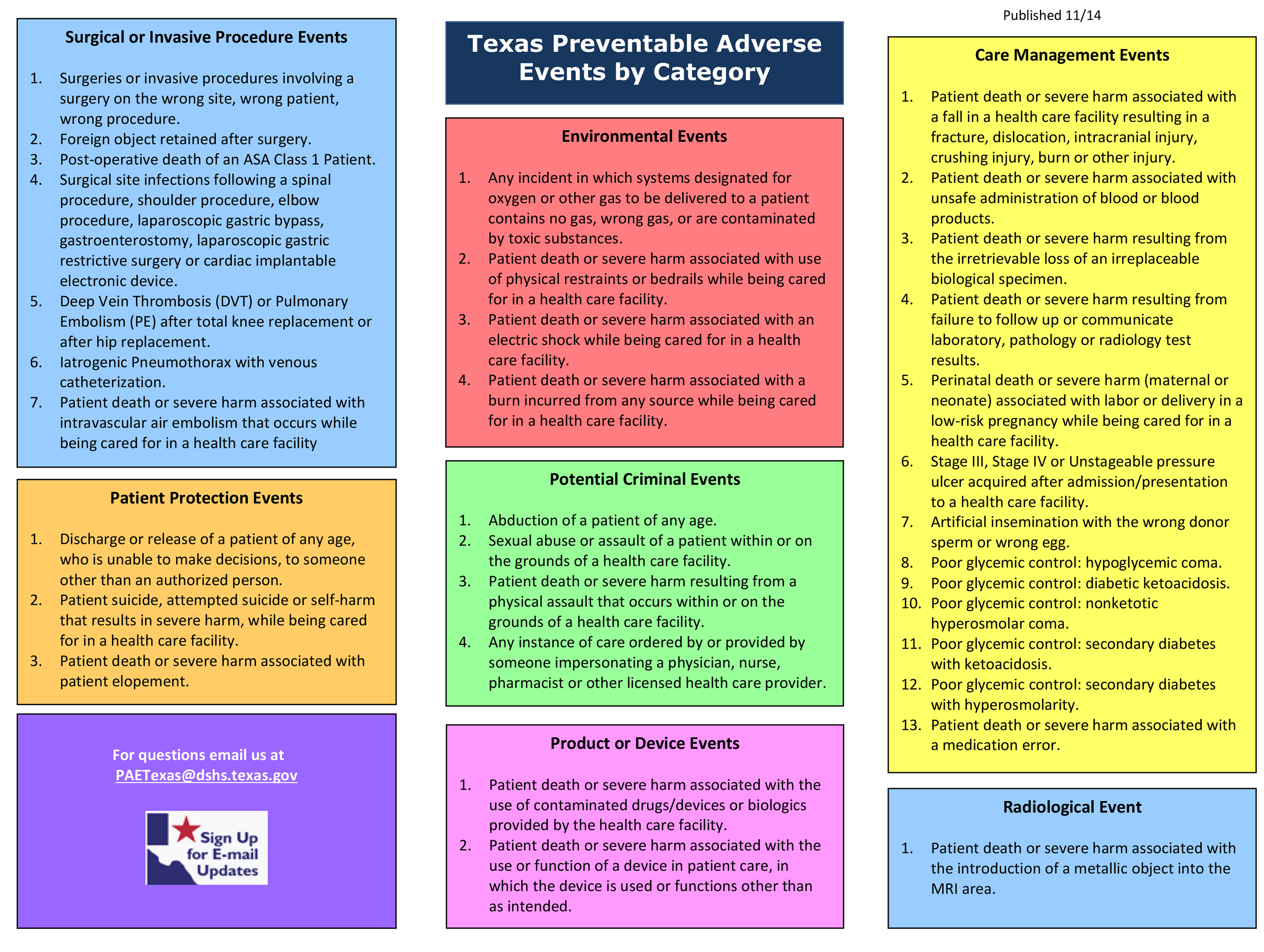Preventable Adverse Event Reporting
Preventable Adverse Events, also known as PAEs, can happen in healthcare. They are not supposed to happen. An example would be surgery on the wrong body part, or a bad injury from a fall. Healthcare workers try hard to make sure PAEs don't happen.
The State of Texas decided that as of January 1, 2015, most hospitals and surgery centers must report PAEs to the Department of State Health Services.
A report of Preventable Adverse Events (PAEs) that have happened will be made every six months. Please visit Facilities Reports to find these reports.
Reportable PAEs
